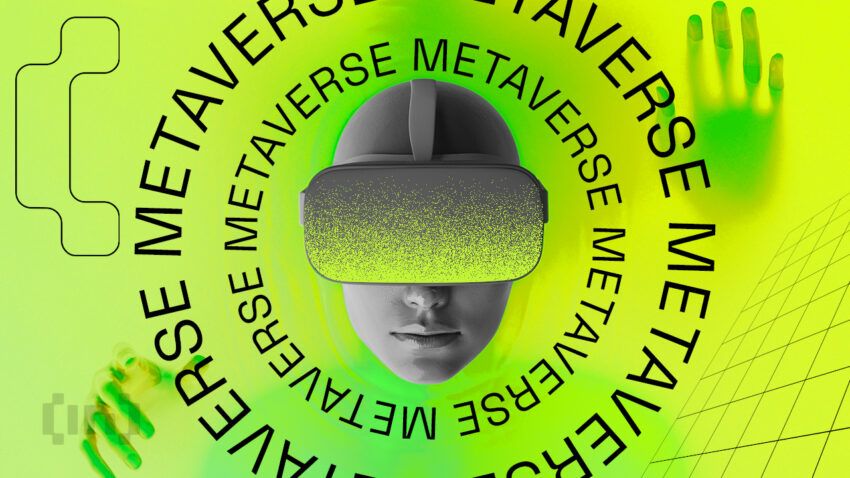Virtual worlds have grown in popularity in recent years and are pivotal in shaping the metaverse concept. As an interconnected virtual universe, the metaverse has enormous potential to change how we interact, work, and socialize. This guide considers the importance of connecting virtual worlds to create a cohesive metaverse experience, as well as the challenges, strategies, and opportunities that come with it.
Learning about virtual worlds

Virtual worlds are immersive digital environments where users can interact with one another and the virtual environment. Popular platforms like Second Life, Fortnite, and Roblox have an extensive user base, demonstrating the growing popularity of virtual worlds. These virtual worlds provide a wide range of experiences, from gaming and socializing to attending virtual events and conducting business meetings.
As virtual worlds continue to gain popularity, the strain on existing infrastructure becomes more evident. The increasing number of users engaging in various activities within these digital realms puts pressure on servers, data centers, and energy resources. To address this challenge, technology companies and platform developers are continuously seeking innovative and eco-friendly solutions.
Options include optimizing data centers for energy efficiency and employing renewable energy sources to lessen the ecological impact of running these expansive virtual ecosystems. By incorporating environmentally conscious practices into the development of virtual worlds, we can ensure a more sustainable future for this rapidly evolving digital landscape. All while still providing an enjoyable and immersive experience for users.
What is the metaverse concept?
The metaverse is an interconnected network of virtual spaces. Users can move between worlds while maintaining their identity and belongings. Combining augmented reality (AR), virtual reality (VR), and the internet provides participants with immersive experiences.
As technology advances, major companies have invested in metaverse-related projects, leading to progress in VR, AR, and shared virtual spaces. While challenges such as data privacy, digital ownership, and accessibility remain, the metaverse’s momentum continues to grow. It has expanded into various professional fields, improving remote work and virtual collaboration. As these challenges are addressed, and technology evolves, the metaverse holds great promise in how we interact with digital content and each other.
The difficulties of linking virtual worlds to the metaverse
Bringing virtual worlds together into a unified metaverse presents several challenges. To achieve seamless interoperability, technical obstacles such as disparities in platforms and protocols must be overcome. A cohesive metaverse environment requires consistent user experiences across different virtual worlds. Furthermore, issues concerning intellectual property rights and virtual asset ownership must be carefully considered in order to avoid conflicts.
In addition to the technical challenges mentioned above, identity and privacy represent major difficulties in linking virtual worlds to the metaverse. In a connected digital realm where users can freely move between various virtual environments, ensuring the security and privacy of individuals is important. Users may have different personas or avatars in different virtual worlds, and managing identity across these spaces can become complex.
Management systems that allow users to control their data and choose how they are represented in different contexts remain vital. Striking the right balance between enabling seamless interoperability and protecting users’ privacy rights will be crucial to building a trustworthy and user-centric metaverse.
Strategies for linking virtual worlds to the metaverse
Protocols for standardization and interoperability are critical for bridging virtual worlds. These protocols would define common rules and guidelines that virtual world developers can follow to ensure their platforms can communicate and interact with one another effectively. By encouraging collaborations and cross-platform integrations, developers can work together to make the metaverse transition smoother and more user-friendly.
One promising technology that aids in achieving this interoperability is the blockchain. Blockchain’s decentralized nature maintains a secure and transparent ledger. By utilizing the blockchain, users can have true ownership of their digital assets. This makes it possible to buy, sell, and trade virtual goods across different virtual worlds seamlessly. Additionally, blockchain technology can provide a unified and secure method of managing user identities across various platforms. This can simplify the user experience and help secure user data from potential hacks. As blockchain technology continues to evolve and gain wider adoption, it holds the promise of enabling a more connected and inclusive metaverse. Here, users can navigate a multitude of virtual worlds with ease and confidence.
The importance of user participation
One of the key aspects that will greatly influence the success of linking virtual worlds to the metaverse is user engagement and participation. Without an active and engaged user base, the metaverse may struggle to achieve its full potential. Therefore, platform developers and content creators must prioritize user-centered design and immersive experiences. Gamification, social interactions, and personalized content can all play a crucial role in keeping users engaged and returning for more.
Fostering a sense of community and belonging within the metaverse can encourage users to invest in their virtual identities and assets, further driving the demand for interoperability. By placing users at the center of the metaverse experience, developers can create a dynamic and thriving digital universe that truly reshapes how we interact, work, and socialize.
Opportunities and prospects
In the coming years, the metaverse is expected to grow at an exponential rate, as per Statista data. Connecting virtual worlds opens up enormous opportunities for cross-industry innovation. Through seamless integration, gaming experiences, social media interactions, e-commerce, and even remote work can all be elevated to new heights.
For instance, in the gaming industry, the metaverse enables players to move between various game worlds, all while retaining their unique identity and virtual assets across both experiences. This brings a sense of continuity to gaming experiences. Moreover, users in the metaverse can interact with friends and followers as avatars in virtual environments, such as participating in events together.
Furthermore, the potential for e-commerce in the metaverse is immense. Think of fashion metaverses — brands and retailers can set up virtual stores, providing a unique and interactive shopping experience for users. Virtual try-ons for clothes, cosmetics, and accessories have become possible, helping customers make more informed purchase decisions. This allows for dynamic and interactive advertising, making brand engagement more immersive and personalized.
In the realm of remote work, the metaverse presents exciting opportunities for creating collaborative and highly productive virtual workspaces. Teams worldwide can come together in shared virtual environments, making video conferencing and virtual meetings more engaging and interactive. With the right tools and integration, remote workers can collaborate on 3D models and host virtual training sessions. All of this contributes to a significant boost in productivity and fosters a stronger sense of unity among team members.
The metaverse’s potential goes beyond these industries and can even extend to areas such as healthcare, architecture, and entertainment.
Collaboration will be key to metaverse success
The importance of connecting virtual worlds in realizing the metaverse’s transformative potential cannot be overstated. Industry collaboration and innovation will be critical in achieving a cohesive and interconnected virtual universe as technology evolves. Accepting this vision, we stand on the verge of a new era in which the metaverse transforms human experiences and interactions across the digital landscape.
By embracing the challenges and opportunities of metaverse interoperability, we can shape a digital realm that empowers creativity and brings people closer together in meaningful ways. With collective efforts and the adoption of emerging technologies, the metaverse can become a vibrant and inclusive space that enriches our lives and shapes our future.
Frequently asked questions
What are virtual worlds, and why are they important for the metaverse?
What challenges are associated with linking virtual worlds to the metaverse?
How can blockchain technology help in linking virtual worlds to the metaverse?
What are virtual try-ons?
What opportunities does the metaverse offer in various industries?
About the author

Andy Ku is the CEO of ALTAVA. As a graduate of architecture and urban planning from Cornell and Harvard, Andy has been involved in startups since 2002, working with some of the world’s most recognizable names in media and gaming. Andy is a pioneer in social gaming, having created MStar, a 3D-avatar-based fashion app. Andy launched ALTAVA Group to bring brands into the metaverse, offering them virtual spaces to share stories. A place where they can feature their digitized collections in a branded and fully customizable environment.
In 2014, Andy founded BlueArk, working with Viacom, Nickelodeon, Cartoon Network, and XIX Entertainment to develop and publish games and digital education platforms by converting famous IP such as SpongeBob, Dora the Explorer, Toonix, and American Idol into digital forms. BlueArk Global launched these games and platforms in more than 137 countries.
ALTAVA Group has collaborated with Fendi, Balmain, LVMH, and a number of other luxury brands to help them enter the web3 era.
Disclaimer
In line with the Trust Project guidelines, the educational content on this website is offered in good faith and for general information purposes only. BeInCrypto prioritizes providing high-quality information, taking the time to research and create informative content for readers. While partners may reward the company with commissions for placements in articles, these commissions do not influence the unbiased, honest, and helpful content creation process. Any action taken by the reader based on this information is strictly at their own risk. Please note that our Terms and Conditions, Privacy Policy, and Disclaimers have been updated.




